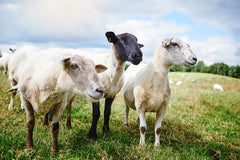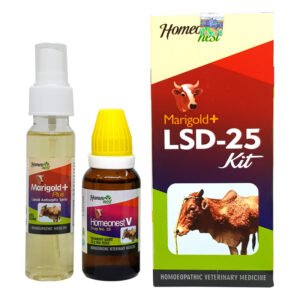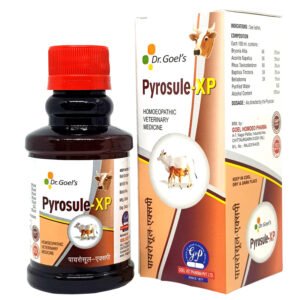
FOOMASULE: Foot And Mouth Disease, Its Existence Shall Cease
Foot and mouth disease in cattle: a disease commonly found in the cattle population in India is endemic in Asian – the African continent. FMD is quite a widespread disease process and is considered to be an important viral disease of ruminants. With strains SAT1, SAT2, SAT 3, ASIA 1, O, A and C, this disease affects both the cattle as well as the Dairy farmer adversely. Cattle’s quality of life along with productive life seriously hampered with around Rs.18,000 – 22,000 Crores loss annually incurred according to a study. India has 528 million FMD-susceptible animals [Pattnaik et al 2012] which includes a wide variety of animals [Ungulates i.e., cloven footed animals] such as cow, buffalo, goat, etc. with the disease being so dangerous and widespread, it is essential to understand more about this disease, how it manifests, how domestic animals get infected, what is the outcome and what is the probable line of treatment for the same. In today’s blog, let us unveil the world of FMD, and some of the FAQs pertaining to it.
SO, WHAT IS FMD OR FOOT & MOUTH DISEASE?
Foot and Mouth disease is a viral disease caused by an aphthous virus of the family Picornaviridae which affects the cloven-footed animal species such as cows, buffaloes, goats, sheep, and pigs, etc. it also affects wildlife such as Bisons, elephants, antelopes and deer being particularly susceptible.Foot and Mouth disease commonly abbreviated as FMD and is locally called मुंहपका-खुरपकारोग in Hindi Local language. This disease manifests itself as vesicles or blisters erupting on foot, udder as well as mouth followed by erosion of the affected areas. Result? Restlessness, excessive salivation, discomfort, drop in milk yield and production, abortion, lameness and drop in fertility. Young animals are particularly badly affected as this virus causes myocarditis [Inflammation of the Myocardium of the Heart] and death. In susceptible populations, the morbidity rate or the infection rate is as high as 100% which means if an infected animal is introduced to the herd or if the susceptible crowd is accidentally exposed to this virus, there is a good chance that almost 100% or the entire herd will inevitably be infected. That’s how unique this disease really is!
WATCH OUT FOR THESE: COMMONLY OBSERVED SIGNS AND SYMPTOMS
Any disease process manifests itself in the form of commonly observed signs and symptoms. FMD especially stands true to its name i.e. The major signs associated with this disease [vesicles/pustules] are located at the foot and mouth region of the cattle. Let us have a look at the other signs and symptoms of FMD:
- Increase in body temperature for 2-3 days with an incubation period of this virus is 1-8 days [Signs and Symptoms start flaring up at around Day 3]
- Vesicles formation at mouth region, foot, udder
- These vesicles may rupture further causing erosion and leaving a raw scar behind.
- Drooling of sticky, foamy and stringy saliva from the mouth
- Reduction in food consumption [as these lesions are painful post rupturing] which makes the animal refuse to feed and water.
- Immunity inevitably falls down due to the ongoing viral infection
- Lameness and weakness
- Loss of body weight which is caused by both the ongoing infection as well as secondary anorexia
- Young animals affected by the FMD virus suffer worse. Myocarditis and death are very rampant in young ones.
- Production related signs are observed as well. These are:
- Drop in milk yield
- Abortions
- Reduced capacity of milking
- Infertility
- The fertility rate goes downhill
- Recovered cows still show lower milk yield as compared to the pre-infection yield rate
FMD TREATMENT IN CATTLE
PREVENTION IS BETTER THAN CURE: HOW TO PREVENT FOOT AND MOUTH DISEASE IN CATTLE?
It is essential to realise that FMD is a viral disease and it spreads through aerosols, contaminated fomites [milking equipment, infected handling instruments, clothing, shoes, transport vehicles] could potentially be the vehicle for disease particulates. Infected food and water too can potentially spread the disease further. This gives us an idea, of how this virus can potentially aggravate and spread from one farm to another creating an atmosphere of chaos and causing heavy losses to farmers and animal health.
That being said, FMD is a dangerous disease that can spread rather quickly, causing morbidity or infection at a much higher rate than anticipated, however, this disease can be easily prevented by-
1. Vaccination
Vaccinate your farm animals on time. Vaccines are an efficient tool for protecting and safeguarding cattle from the threat of viral diseases such as FMD. The vaccination schedule of FMD is as follows:
1st dose of the vaccine- To be given at the age of 4 Months and above
2nd dose [Booster Dose] -To be given 1 month post the previous dose
Subsequent Dose – every 6 months to annually.
2. Ensure proper cleanliness and sanitation
Sanitation is an important step which should never be overlooked or ignored. Not just FMD, but there are many diseases and infections which flare up given the poor sanitation protocols or poor managemental practices. Having good managemental practices and sanitation protocol is critical for the health management of both: animals as well as animal handlers or dairy farmers.
Here’s what you can do:
- Ensure cleanliness of the cattle [Medicated or Routine Bath as indicated, proper grooming schedule, timely cleaning of urine, dung etc]
- Ensure cleanliness of milking apparatus [All milking apparatus must be thoroughly cleaned and sanitized prior to milk collection]
- Ensure the cleanliness of farm helpers or persons who are milking the cattle. [Hands, and feet must be thoroughly washed prior to milking, clean clothing is a must]
- Ensure that the dairy farm is well protected. All vehicles entering the farm must be sanitized properly.
3. Boosting immunity
Immunity is the key to survival. Yes, Immunity has been playing a crucial role in protecting our bodies from harmful foreign pathogens such as viruses, bacteria etc. Immunity can be boosted by various techniques such as good quality ration, stress-free and healthy lifestyle, immune-modulators, etc. Do check out our blog on immunity as well to learn more about immunity and its role.
WHAT IF THERE IS AN FMD OUTBREAK?
So, in case, there is an FMD outbreak nearby, there lies a threat that your farm could come under the clutches of this viral outbreak. So how do we protect our beloved cattle? Answer- by following strict sanitation protocols. Novel Homeopathic drug Foomasule No 1. It is an efficient tool to protect your cattle in case of an FMD outbreak nearby. Foomasule No.1 gives immunity against all strains of the FMD virus and develops resistance within 48 hours to 72 hours. It is effective even in conditions where there is a constraint of separating diseased animals from the herd.

FIGHTING FMD:
If there is an FMD outbreak on your farm, it is important to isolate the infected animals and protect the ones who are immunologically competent. For affected animals, the treatment is usually symptomatic which includes, saline [if there is prolonged anorexia and weakness], antibiotics to prevent any secondary infections, vitamins and treating the local lesions. Along with conventional therapy, Foomasule no 2 is a homeopathic drug that helps combat this war against the foot & mouth disease virus. Foomasule No.2 responds against all strains of infections and cures mouth lesions, and the animal starts grazing as soon as possible. There is reduced salivation which corresponds to the start of the recovery phase. The foot lesions start drying up faster, preventing any exogenous growth between footpads.
Homeopathic Solutions For Cow and Buffalo
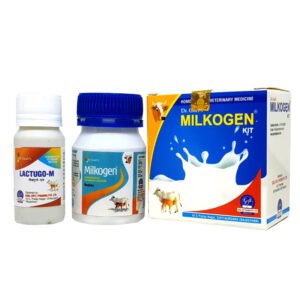 MILKOGEN KIT for Increasing Milk in Punganur Cow
MILKOGEN KIT for Increasing Milk in Punganur Cow
MILKOGEN Kit is an excellent Homeopathic Veterinary Medicine used in Cows and Buffaloes to increase milk yield naturally. It is a natural replacer of oxytocin hormone without any contraindications or side effects but with a definite increase in the milk yield. It increases the milk quantity and fat percentage of the milk to the full potential of an animal.
TEATASULE FIBRO GOLD KIT For Mastities Issue In Punganur Cow
TEATASULE FIBRO GOLD KIT is the best Homeopathic Veterinary Medicine for female animals in the case of chronic and clinical mastitis. TEATASULE FIBRO GOLD KIT is very effective in case of chronic or clinical mastitis when the udder is as hard as a stone, teats are shrunk with fibroids developed in the teats, and in teat cracks.
Marigold+ LSD-25 Kit For Lumpy Skin Diseases
Marigold+ LSD-25 Kit is For boosting immunity against LSD and other similar viral diseases. It is a Homeopathic Treatment of Lumpy Skin Disease (LSD) in cattle with oral medicine for enhancing internal Immunity and Healing Spray for treating external wounds.
Pyrosule-XP for High Fever in Cattle
PYROSULE-XP for CATTLE is the best Homeopathic Veterinary Medicine for Cattle that protects animals from infection. PYROSULE-XP relieves muscular and nervous pain that occurs during a fever and even decreases the severity of the fever.
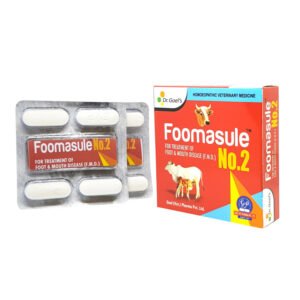 FOOMASULE NO. 2 for Foot and Mouth Disease
FOOMASULE NO. 2 for Foot and Mouth Disease

ProlapsGo For Prolaps Problem In Cattle
PROLAPSGO for cattle is the best Homeopathic Veterinary Medicine for Pre-partum or Post-partum prolapse of the uterus in cows & buffaloes. PROLAPSGO gives fast and long-lasting relief in case of prolapse of the uterus in cows and buffaloes. It can be sprayed directly over the prolapse of the uterus and can also be administered orally.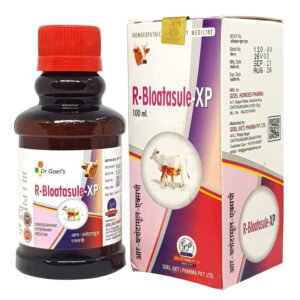
R.Bloatasule-XP For Bloating Issue in Cattle
R. BLOATASULE XP is the best Homeopathic Veterinary Medicine that is helpful for the treatment of indigestion, anorexia, and liver disorders.Check out: – GOHEAL SPRAY
Check out: – HEMISEPT for CATTLE – 100ML





